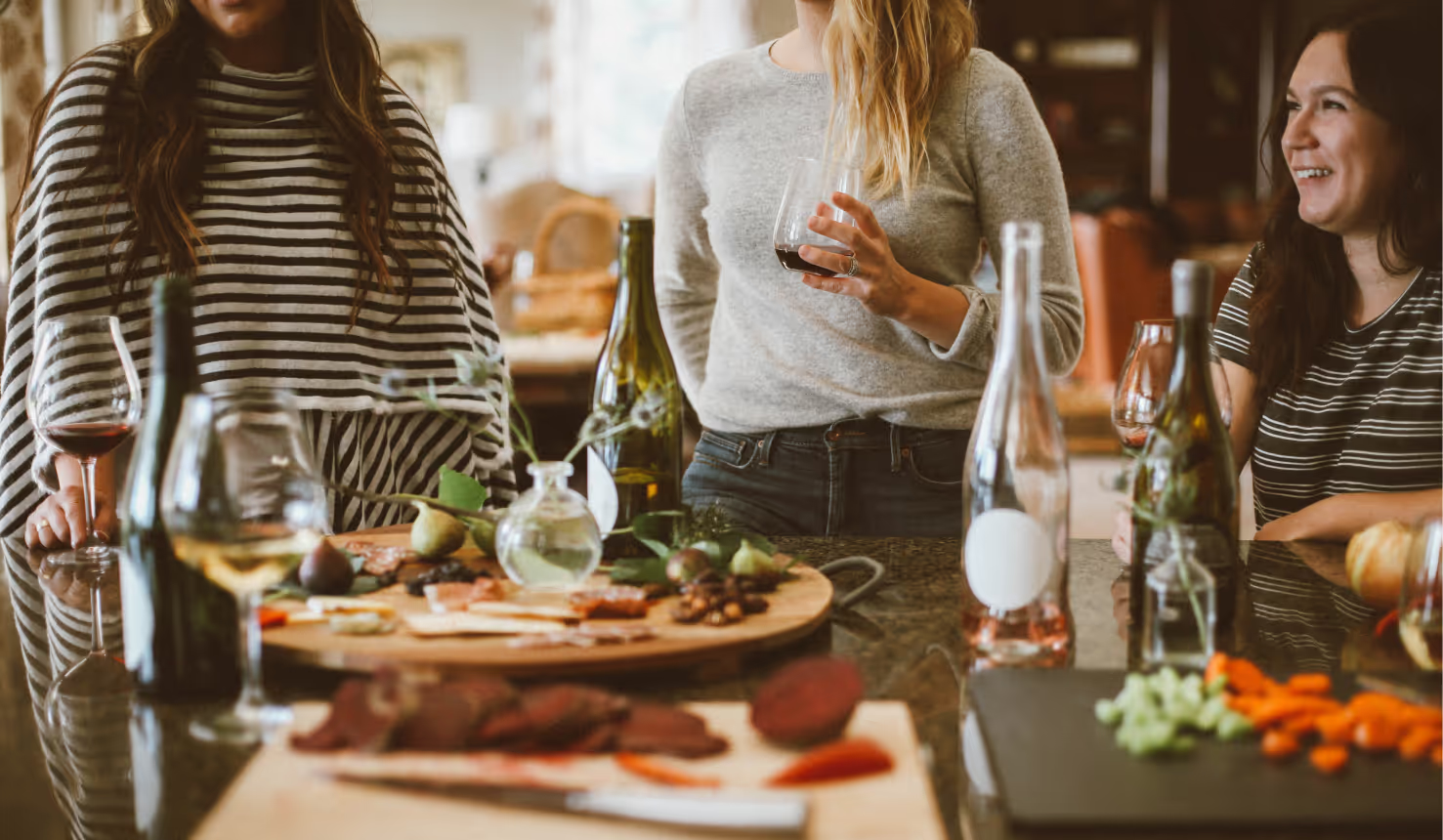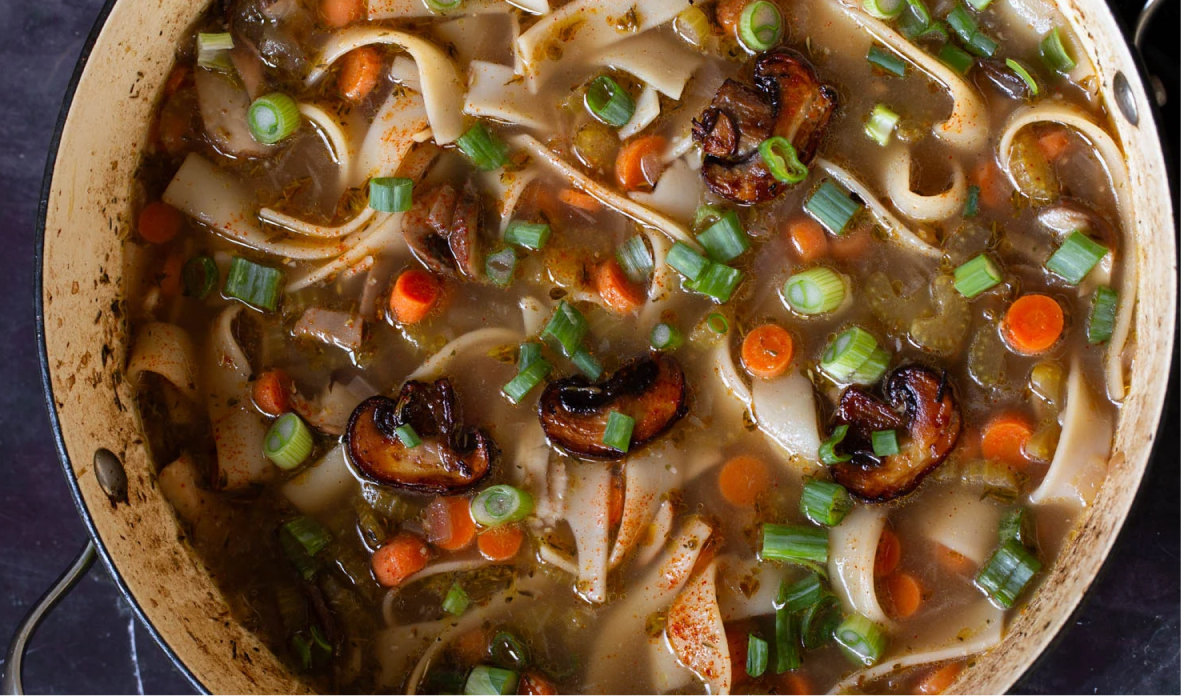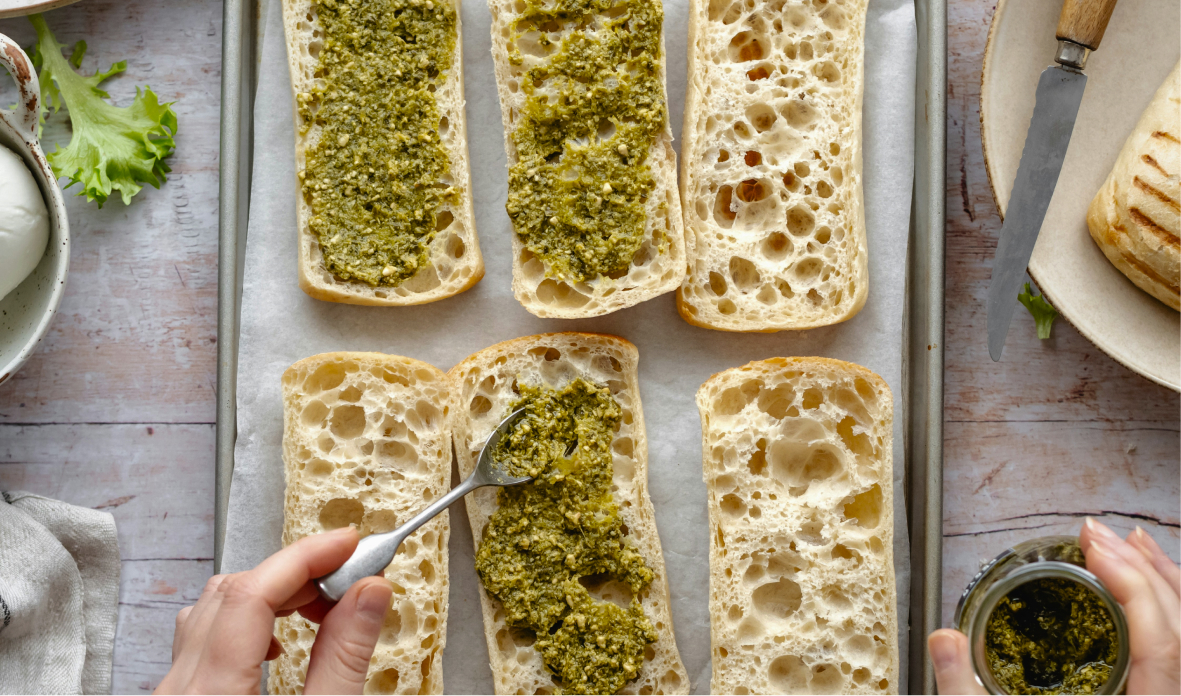10 Gateway Climate Actions to Try with Your Family This Thanksgiving

Join the community





At the Thanksgiving table, you can find yourself sitting amongst folks who are on any part of the climate action spectrum: from active advocates to deniers. One way to advocate for climate action is to take the show-don’t-tell approach.
There are climate actions you can take to show your family and friends that it’s not only simple to live more sustainably, but it can save money, too.
Whether you’re the host or a guest, use this guide to for a more sustainable Thanksgiving.
1. Collect all the food waste and compost it
From pumpkin seeds to soggy rolls, you can gather and compost all the food waste from Thanksgiving. Let your family know that reducing food waste and composting are some of the most significant climate impacts individuals can have!
Remember, most advice suggests keeping breads, bones, meat, fats, and sugars out of home compost setups, so those may be best kept in industrial compost facilities. All the vegetables and fruits should be safe to compost in any home setup. Here’s a more in-depth guide to composting.
2. Volunteer to bring dishes instead of using plastic plates
Instead of using disposable plastic plates or plastic-coated paper plates, volunteer to bring plates and cutlery to your family or friend’s Thanksgiving. You can wash them up afterward, and you’ll probably get help! If you don’t have enough dishes, you can ask other guests to bring some or source some from your local thrift store.
3. Bring reusable food containers for leftovers
To cut down on plastic wrap and aluminum foil, bring lidded containers for folks to take leftovers home with them. If there aren’t enough containers, try covering plates and bowls with reusable covers or beeswax wrap.
4. Offer to source your family or friends ingredients from a local farmers market
Supporting local farms not only boosts the local economy and agriculture, but the food is fresher, more flavorful, and more nutrient-dense. Plus, buying local cuts down on food miles.
Get a grocery list from the folks cooking for your Thanksgiving and offer to get all their produce from the farmers market for them. You can have folks reimburse you or consider your farmers market haul as your contribution to the feast. Bonus points if you drop the food off.
5. Cut down on meat by offering a plant-based “main”
With a filling, meat-free main, your dinner crew can get a smaller turkey, or skip turkey altogether. And you don’t have to go for tofurkey. Try some of these alternatives for a plant-based main:
6. Take the turkey bones
Raising livestock and poultry generates a lot of emissions from land use, food production, and polluting machinery. If you have a turkey at Thanksgiving, get the most out of every morsel and offer to take the carcass to make turkey stock.
You can also toss in any skins or scraps from onions and garlic, the tops of carrots, and any spare herbs, and you’ll have a flavorful, nutritious broth that you can use for soups and sauces.
7. Take uneaten food to a community fridge
Another brilliant way to reduce food waste is to give it to neighbors via your local community fridge. Hundreds of free fridges and pantries have popped up across the world, and the idea is simple: Take what you need and leave what you can.
Gather uneaten, unopened food and take it to a community fridge near you. Some community fridges do not allow home-cooked food. Check with yours before bringing homemade food. You can always take produce, canned foods, and any unopened eats.
Freedge is a great resource for finding a community fridge near you. If there isn’t one in your area on the Freedge map, Google around to see if you can find one or start one in your neighborhood.
8. Make a foraged side
Find out what kinds of greens, fruits, seeds, or fungi are growing in your area and go foraging for super local ingredients. It’s super important, especially when foraging for mushrooms, to double check and ensure you know exactly what you’re picking.
Always check for potential plant lookalikes to ensure you’re eating what you think you’re eating and not something poisonous. If you’re unsure, it’s best to skip it or check with reputable foraging groups online
Whatever types of plants or fungi you find, follow forager best practices: only take plants that there’s an abundance of and be sure to leave some behind so they can regrow next season.
9. Bring foraged decorations
Flowers, branches, and greenery can all contribute to a beautiful centerpiece that you can find in your neighborhood. You can pick stems from your garden or go on a little foraging trip around your neighborhood or a local park. Whatever types of plants you find, follow forager best practices: only take plants that there’s an abundance of and be sure to leave some behind so they can regrow next season.
10. Prepare for climate conversations
If you want to prepare yourself to talk about climate change at the dinner table, we suggest this episode of the How to Save a Planet podcast: Trying to Talk to Family about Climate Change? Here's How. If you need some stat support, check the Commons Instagram for charts galore. And, of course, the Commons app is a great resource for folks to feel less overwhelmed when starting their climate journey.













